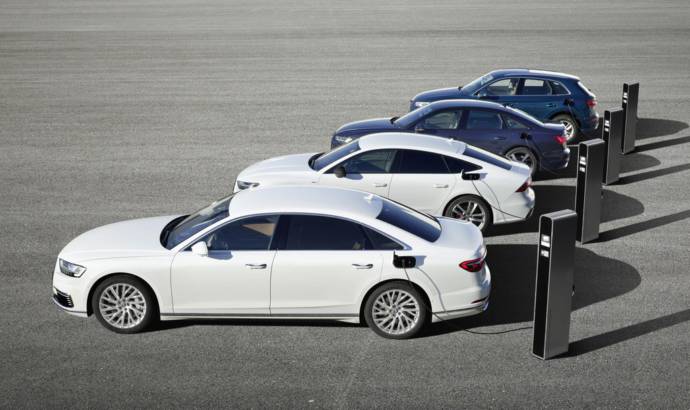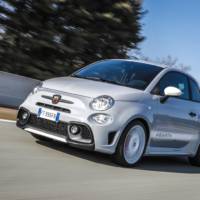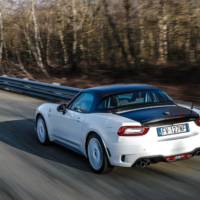Audi is stepping into the future and writing another important page of its history during this year geneva Motor Show, where it will introduce the first range of plug-in hybrid models.
Appearing for the first time on the Audi stand on Tuesday March 5 will be new hybrid variants of the A6, A7 Sportback, A8 and Q5, the majority of which will be available in a choice of two configurations with either a comfort or performance orientation and corresponding outputs and equipment packages. The new plug-in hybrid models will be available for order during the course of 2019.
The plug-in hybrid electric vehicles (PHEV) offer the obvious advantages of zero-emissions urban driving when in electric-only mode, freedom from range anxiety when driving long distances and dynamic, responsive performance thanks to the collaborative power of their high output electric motors and powerful internal combustion engines.
An electric-only range of more than 40 kilometres (25 miles) will be possible in each TFSI e model based on WLTP test data. The hybrid drive concept behind them is designed so that customers can travel for around a third of their usual route in electric-only mode during day-to-day driving.
The fundamental TFSI e concept brings together a turbo-charged petrol engine with direct injection and an electric motor that is integrated in the transmission. A lithium-ion battery beneath the luggage compartment floor supplies the electrical energy. As a result, the electric motor can support the combustion engine during acceleration. The result: high start-off performance and powerful acceleration.
The configuration also offers impressive potential for energy harvesting thanks to recuperation technology based on the system used by the new purely electrically driven Audi e-tron. The electric motor can take care of the majority of everyday braking activations involving gentle, gradual deceleration, and under more moderate braking the task is divided between the motor and the hydraulic wheel brakes. Only when braking force exceeds 0.4g do the hydraulic brakes assume sole responsibility for deceleration. Thanks to this sophisticated control logic the new Audi PHEV models can recover up to 80 kW of energy during braking.
The lithium-ion battery for the A6, A7 and A8 is made up of 104 pouch cells, which are combined in eight modules. It stores 14.1 kWh of energy at a voltage of 385 V. The lithium-ion battery in the Q5 comprises prismatic cells and has the same capacity.
The A8 L 60 TFSI e quattro combines a 3.0-litre, six-cylinder TFSI combustion engine with a permanently excited synchronous electric motor. This is integrated together with the clutch in the eight-speed tiptronic which channels its torque to the quattro permanent all-wheel drive system.
In unison, the two power sources at the heart of the Audi A8 L 60 TFSI e quattro provide an impressive 330 kW (449 metric horsepower) of system output and 700 Nm of system torque. The luxury limousine is available in standard and extended wheelbase A8 L forms.
The Audi A6 and A7 Sportback models with plug-in hybrid drive use the same powertrain, with a battery capacity that is identical to that of the Audi A8 PHEV, but in these cases a four-cylinder 2.0 TFSI petrol engine linked to a seven-speed S tronic transmission transfers torque to the quattro system with ultra technology. The dual-clutch transmission integrates the electric motor.
Both models are available in two output levels with different boost performance. For the 50 TFSI e, the system output is 220 kW (299 metric horsepower); for the 55 TFSI e, it is as high as 270 kW (367 metric horsepower). Peak system torque is 450 and 500 Nm respectively.
The powertrain in the Audi Q5 PHEV follows the same concept as the Audi A6 and A7. The SUV will be available as a 50 TFSI e quattro with 220 kW (299 metric horsepower) system output and as a 55 TFSI e quattro with 270 kW (367 metric horsepower).



